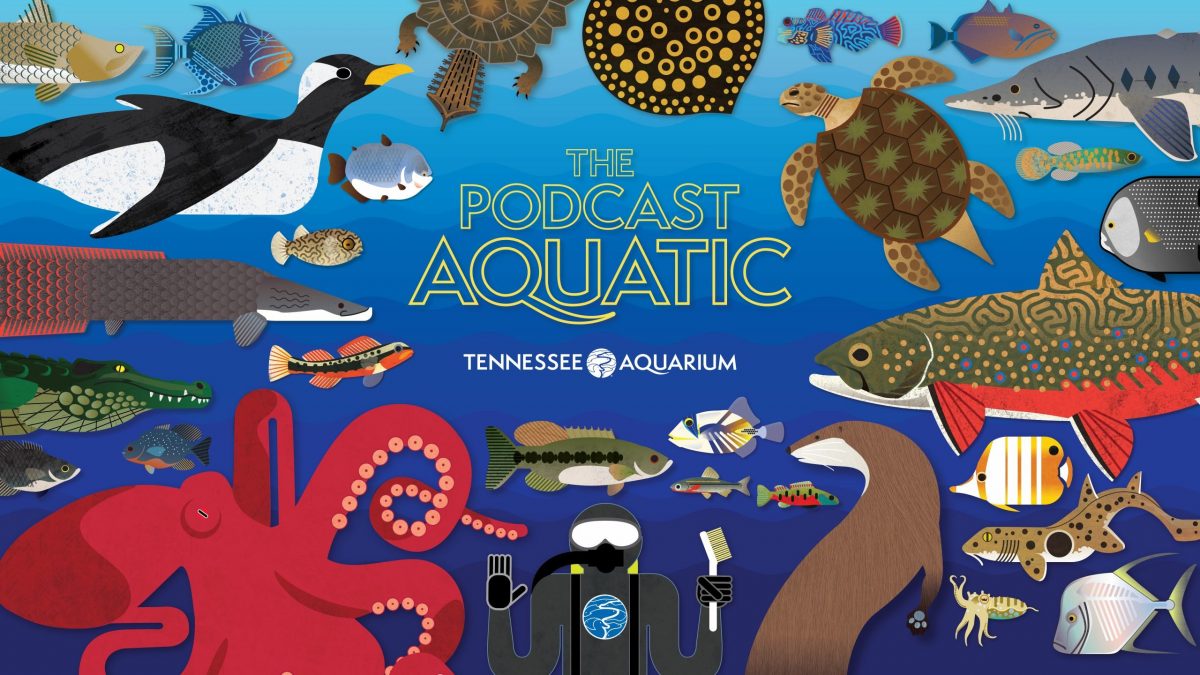In the entertainment industry, there’s a term known as the “sophomore slump” that suggests a creator’s second release tends to fall short, in ambition and quality, of their debut.
So it was an especially tall order for the leadership of the Tennessee Aquarium to think of how to follow up on the Chattanooga institution’s early years of success.
From its focus on freshwater to its location on Chattanooga’s neglected — many thought best-avoided — waterfront, the Aquarium probably shouldn’t have worked at all.
Yet when the doors of the River Journey building (then known simply as “The Tennessee Aquarium”) opened on May 1, 1992, the public reception exceeded its creators’ wildest ambitions and silenced even its most-vocal detractors.
In its first year, the Aquarium attracted 1.4 million guests, nearly tripling the 600,000-visitor projection of a pre-opening feasibility study. The 10 millionth guest arrived just eight years later on Aug. 18, 2000.
The Aquarium’s arrival triggered an unprecedented wave of civic investment in downtown Chattanooga and shined a much-needed spotlight on the vital importance of freshwater to all forms of life. It put the Scenic City back on the map in a new and hopeful light that stood in stark contrast to its former reputation as a polluted, dwindling hub of Dixieland manufacturing.
It was, without a doubt, the definition of a pipe dream come true … not to mention an exceptionally hard act to follow.
It was, without a doubt, the definition of a pipe dream come true … not to mention an exceptionally hard act to follow.

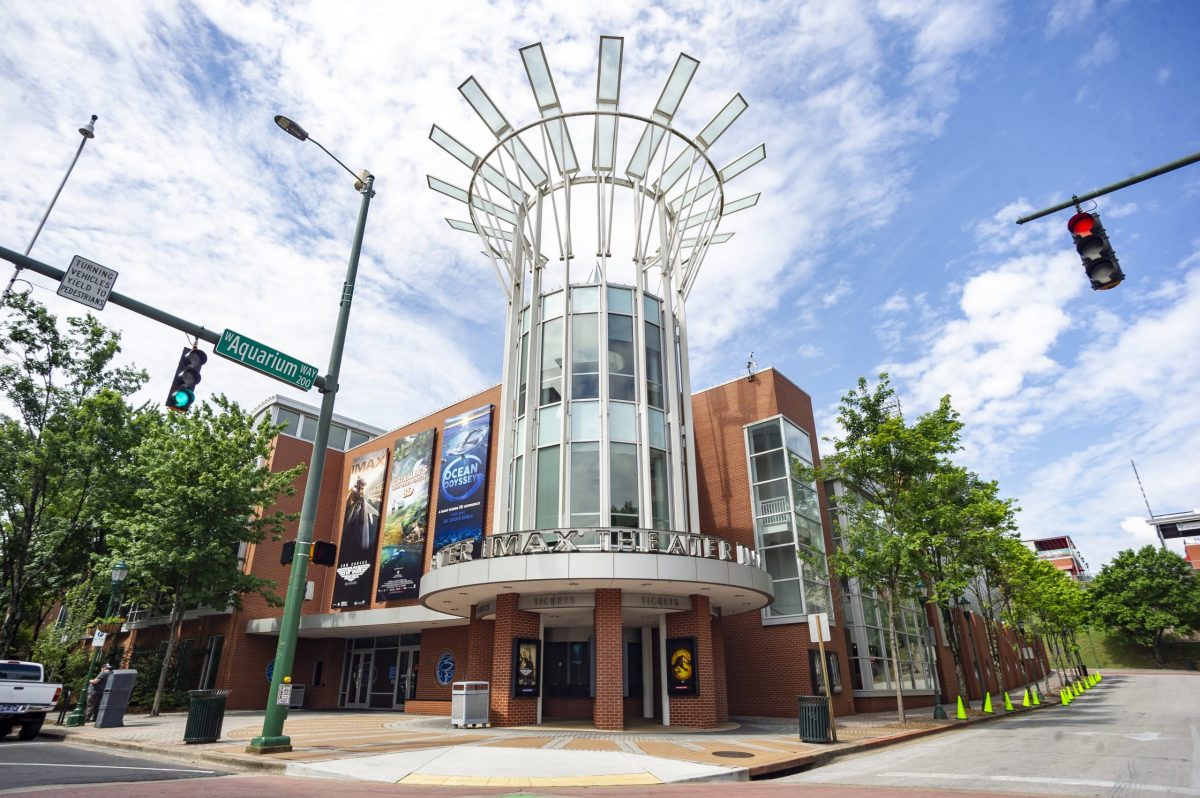
Fig. 1 Prior to the construction of the Tennessee Aquarium (left), the downtown waterfront Chattanooga was largely neglected. The Aquarium's arrival spurred a tremendous amount of development downtown, but the only major expansions to its campus in its first decade was the construction of Tennessee Aquarium IMAX 3D Theater and Environmental Learning Lab (right) in 1996.
A new chapter
In the early 2000s, on the back of a wildly successful first decade, the Aquarium’s leadership recognized the need to do something new. Besides opening the Tennessee Aquarium IMAX 3D Theater and Environmental Learning Lab in 1996, there hadn’t been a major addition to the Aquarium’s downtown campus since its grand opening.
Under its iconic, pyramidal glass peaks, the Aquarium was fulfilling the role of “[Chattanooga’s] very own, home-grown cathedral of conservation,” as Mayor Gene Roberts described it, but there was a growing sense that there were paths left unexplored, says Vice President and Chief Operating Officer Gordon Stalans.
“We were telling the story of water from the mountains to the sea, but we didn’t think we were telling the marine story of water effectively,” Stalans recalls. “We decided that, to do that, we needed to expand and build another building to tell that side of the story.
“We needed more mass to keep attracting people: more exhibits, more ‘new,’ more for people to do than the one building that we had.”
After ten years as the world’s largest freshwater aquarium, it was time for the Tennessee Aquarium to train its sights on an even bigger target: the ocean.

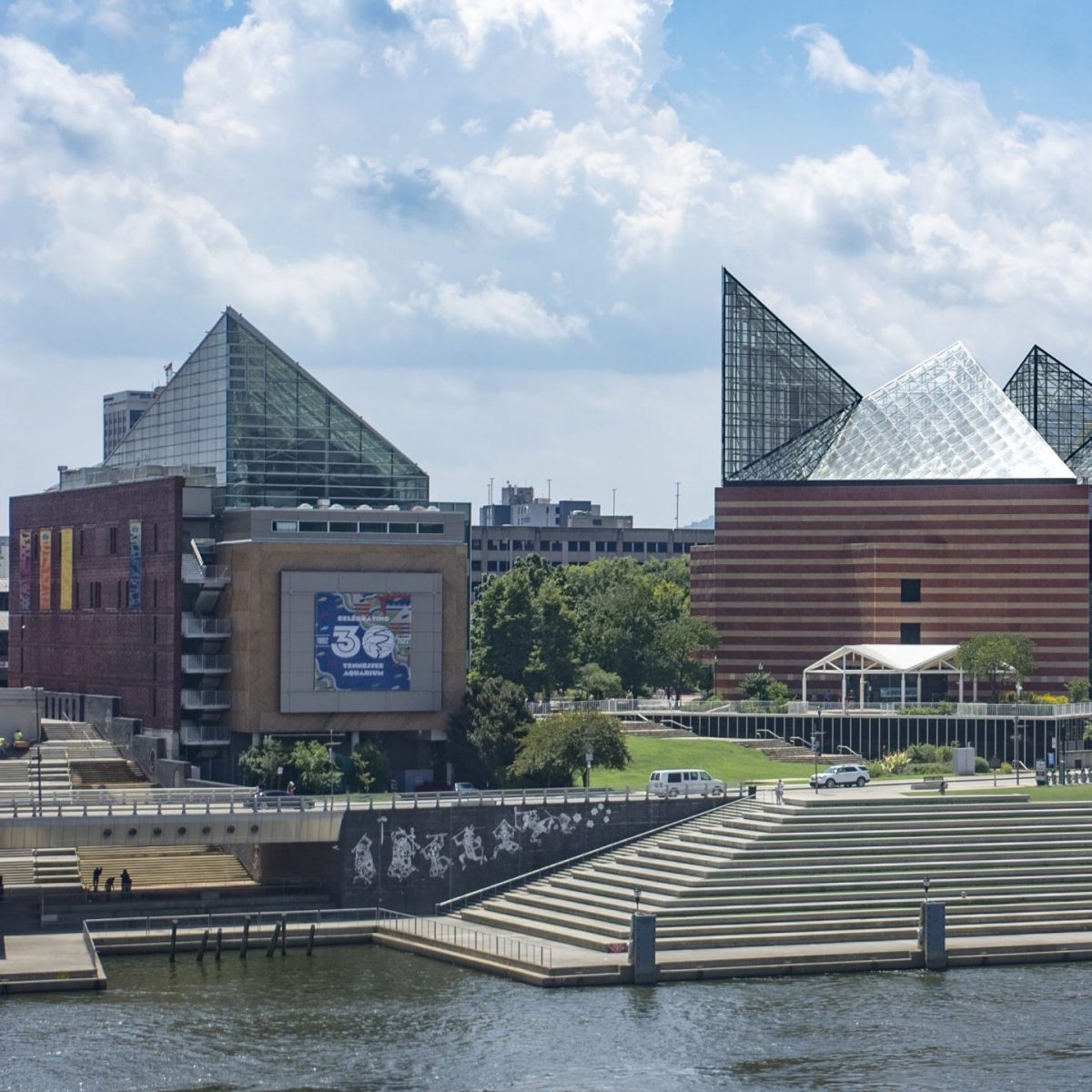
Fig. 2 Construction of the Tennessee Aquarium's second building, Ocean Journey (left), commenced in April 2003. Today (right), the Ocean Journey and River Journey buildings have been an iconic part of the skyline of Chattanooga for 20 years.
Finding funding
The Ocean Journey building opened to tremendous fanfare on April 29, 2005, a day marked by a downtown parade and speeches by local and state political figures. Years before this grand opening, however — long before the first fish were introduced and even before the first shovels of dirt were hefted — the project needed to be funded.
When the Tennessee Aquarium was conceived, its $45-million construction cost ($104 million, adjusted for inflation) was paid for entirely through private sources. It was built on a site once occupied by abandoned riverfront warehouses purchased by RiverCity Company, a newly created nonprofit development agency, and deeded to the Aquarium.
Much like the wave of civic growth that radiated out from the Aquarium after its arrival in 1992, Chattanooga in the early 2000s was exploring another campaign of civic improvement downtown: the $120-million 21st Century Waterfront Plan.
The Plan’s goal was to build on the success of Vision 2000, an effort in the early ’90s to find ways to reconnect the Chattanooga community with its most valuable asset: the Tennessee River.
As the 21st Century Waterfront Plan was getting off the ground, discussions at the Aquarium were well underway to shape what would become Ocean Journey. At the same time, two other downtown institutions — the Hunter Museum of American Art and the Creative Discovery Museum — were also considering expanding or undertaking major renovations.
Rather than approach the community with three different requests for support, then-Chattanooga Mayor Bob Corker suggested joining forces to make a combined funding request for all three projects. The three organizations agreed to work together under Corker’s leadership.
“I want to say it was 84 meetings with potential donors over about a 30- to 45-day period,” Stalans says. “At each meeting, there would be either the CEO or a board member from all three organizations present.”
In the end, the institutions, working together as the 21st Century Waterfront Trust, raised $40 million. Half of this was designated to offset the $35 million ($57.6 million, adjusted for inflation) needed to build the Ocean Journey building, with the rest financed through a bond issue.
Corker’s success spearheading this collective effort earned him public accolades as “the spark plug that made it happen.”
“Our city is most unique,” Corker told Chattanooga’s WDEF NewsChannel 12 in a 2005 interview. “I tell people all across the state that there’s no city like Chattanooga from the standpoint of having a heart and a soul like our citizens have here in their desire to make our city better.”
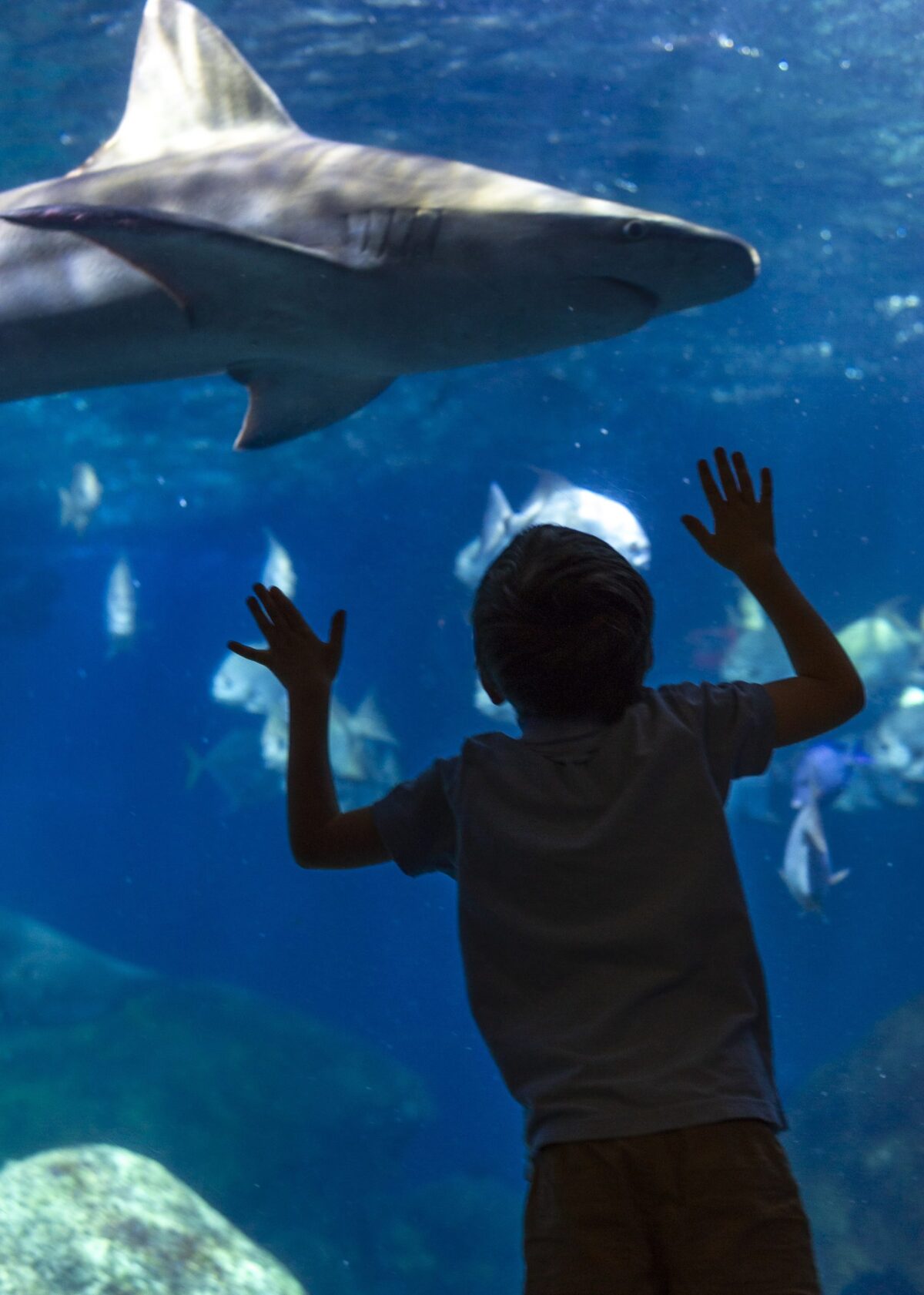
Fig. 3 A young guest (left) stands, enthralled, at a window looking into Ocean Journey's massive 618,000-gallon Secret Reef exhibit as a Sandbar Shark swims by. The exhibit is home to hundreds of fish and other aquatic life (right) found in the Flower Garden Banks National Marine Sanctuary, a series of deep-water reefs located about 100 miles off the Texas coast.
Shifting to saltwater
From the outset, it was clear that the natural storytelling complement to the Aquarium’s focus on freshwater would be a showcase of marine life. The world ocean is a big place, but only one location made sense as a focal point for the new project.
Highlighting the aquatic life in the Gulf was a natural continuation of the Aquarium’s commitment to exploring water’s role in the Southeast, says Thom Demas, the Aquarium’s vice president and chief husbandry and exhibits officer.
“We were an Aquarium that told the story of our river and our region,” he says. “The Gulf was part of that story.”
The Aquarium had featured a smattering of marine exhibits before, including an 88,000-gallon saltwater habitat that became the River Giants exhibit in 2012. At the time Ocean Journey was conceived, focusing a second building exclusively on the ocean was seen as a way to reach a broader audience while exploring all-new facets of water’s role on the planet, Demas says.
“Ocean Journey was a whole new chapter, especially for education,” he says. “Historically, we had focused on the freshwater opportunities in our programs. With Ocean Journey open, we could talk about the Flower Garden Banks National Marine Sanctuary and what they were doing there.”
Located about 100 miles off the coast of Louisiana and Texas, the Flower Garden Banks comprises 17 pristine, deep-water reefs brimming with aquatic life. The only marine sanctuary in the Gulf, it was federally designated as a protected site in 1992, yet it was — and remains — relatively unexplored territory among public aquariums.
Designed to accurately replicate the Flower Garden Banks’ iconic, towering coral formations and salt domes, the Secret Reef was conceived as Ocean Journey’s “big wow” moment. The exhibit formed the core of the building’s design and represented the Aquarium’s largest habitat.
The exhibit’s dimensions were colossal: 97 feet long, 50 feet wide and 32 feet deep. Empty, its volume was a staggering 1.1 million gallons. The lifelike recreations of the Banks’ coral formations occupied some of this space, reducing it to “just” 618,000 gallons, but it nonetheless eclipsed anything the Aquarium previously had attempted.
After exploring the building’s airy, light-filled fourth floor with a rainforest-like Butterfly Garden and an enormous touch experience then known as “Shark Island” (now Stingray Bay), the rest of the Ocean Journey experience would literally wind around, and eventually under, Secret Reef.
“There’s not another Flower Garden Banks exhibit anywhere close to what we’ve done with Secret Reef,” Demas says. “It really kind of is like being in the Flower Garden Banks.”
Many of those who have dived the Flower Garden Banks agree, saying the Aquarium’s recreation of the Gulf’s aquatic wonderscape is both stunning and true-to-life.
“It replicates it (the Flower Garden Banks) very well, except that you have a higher density of fish,” says Jonathan Bird, an underwater filmmaker who dived Secret Reef while filming an episode of his web series Jonathan Bird’s Blue World.
“It’s like the Flower Garden Banks’ greatest hits. You’ve taken the best aspects of that entire place and put it into a smaller area so everybody can see everything. That’s kind of the only difference.”
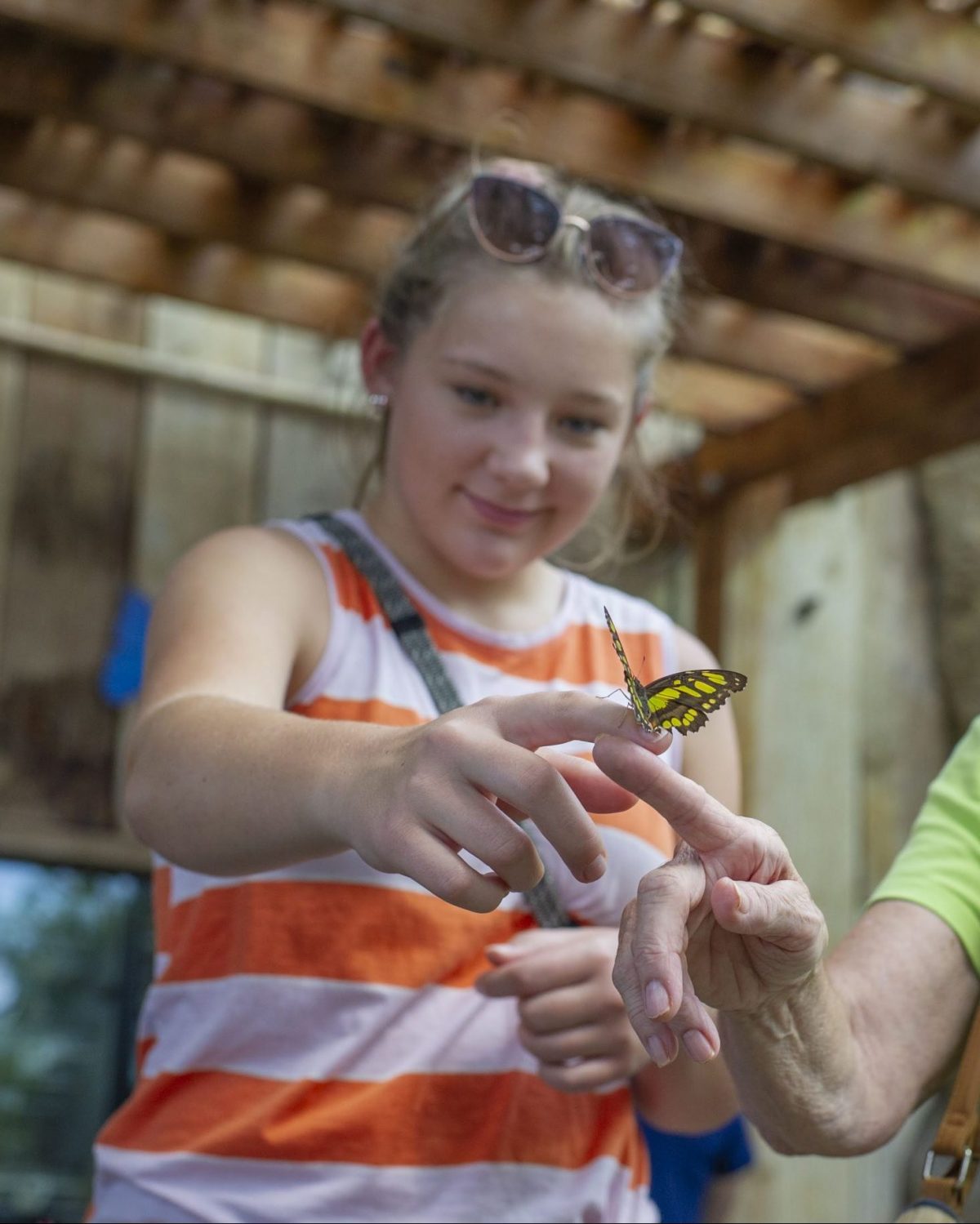
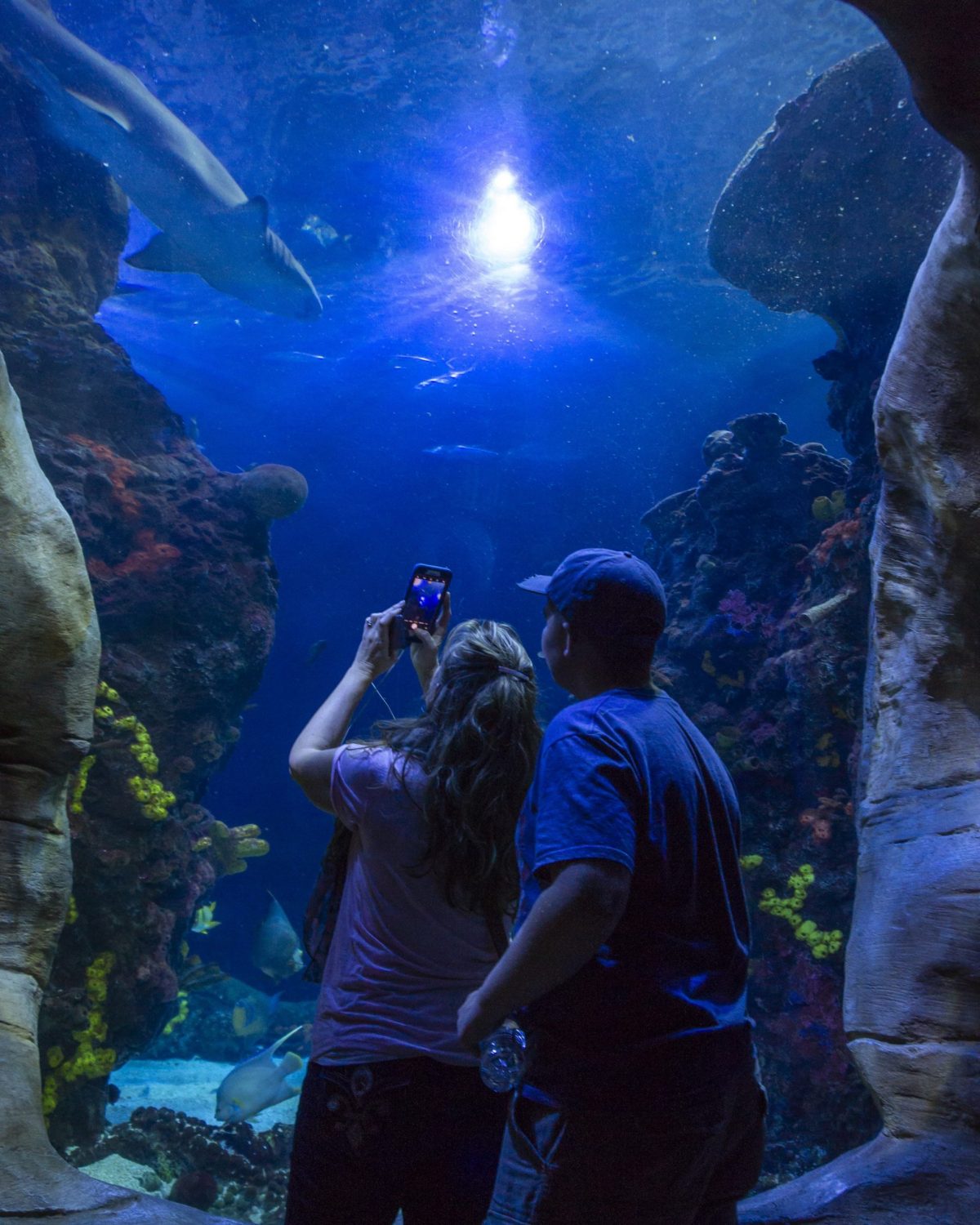
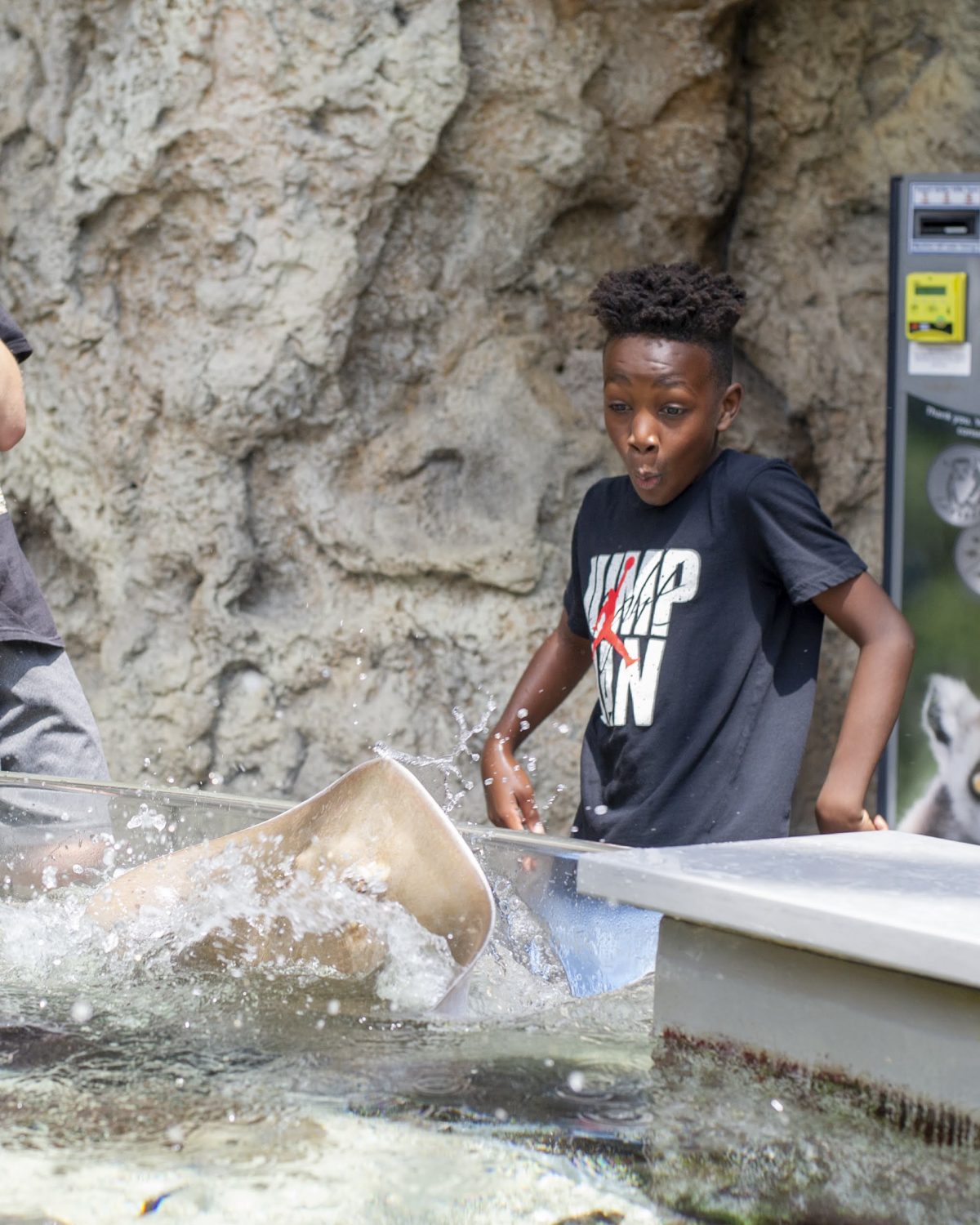
Fig. 4 In the 20 years since its opening, millions of guests have explored the Ocean Journey building to enjoy (from left to right) the Butterfly Garden, the Secret Reef and Undersea Cavern and to lay fingers on sharks and stingrays in its massive touch pool.
The response
Ocean Journey did exactly what it was intended to do. In the months following its opening, it retrained a timely spotlight of interest on the Aquarium and Chattanooga as a whole.
“Here we go again on the riverfront,” former Congressman Zach Wamp told a crowd gathered on the Aquarium Plaza for Ocean Journey’s grand opening celebration. “Just when you thought it couldn’t get any better, it did.”
Visitor numbers climbed, cresting 1.1 million guests in the year following Ocean Journey’s opening. That marked about a 33% increase over the previous year and the Aquarium’s highest attendance figures in about a decade.
“The twin aquariums are generating talk and business for downtown,” WDEF NewsChannel 12’s coverage said. “Behind it all is the optimism that, if the first aquarium could bring in 11 million people to the city in about 10 years, this one would seal the deal.”
The public excitement surrounding Ocean Journey was an important benchmark of success for the Aquarium’s investment and a sign of its continuing relevance and appeal in an increasingly crowded field, Stalans says.
“Atlanta had been talking about building an aquarium for years and years and years,” Stalans says. “Actually, we started planning for Ocean Journey before they made their announcement of what they were going to do.
“We were wondering what the impact of their aquarium was going to be and whether we could adjust to be successful even with that competition in the market. Ocean Journey allowed us to do that in a much more efficient way than we could have with River Journey alone.”
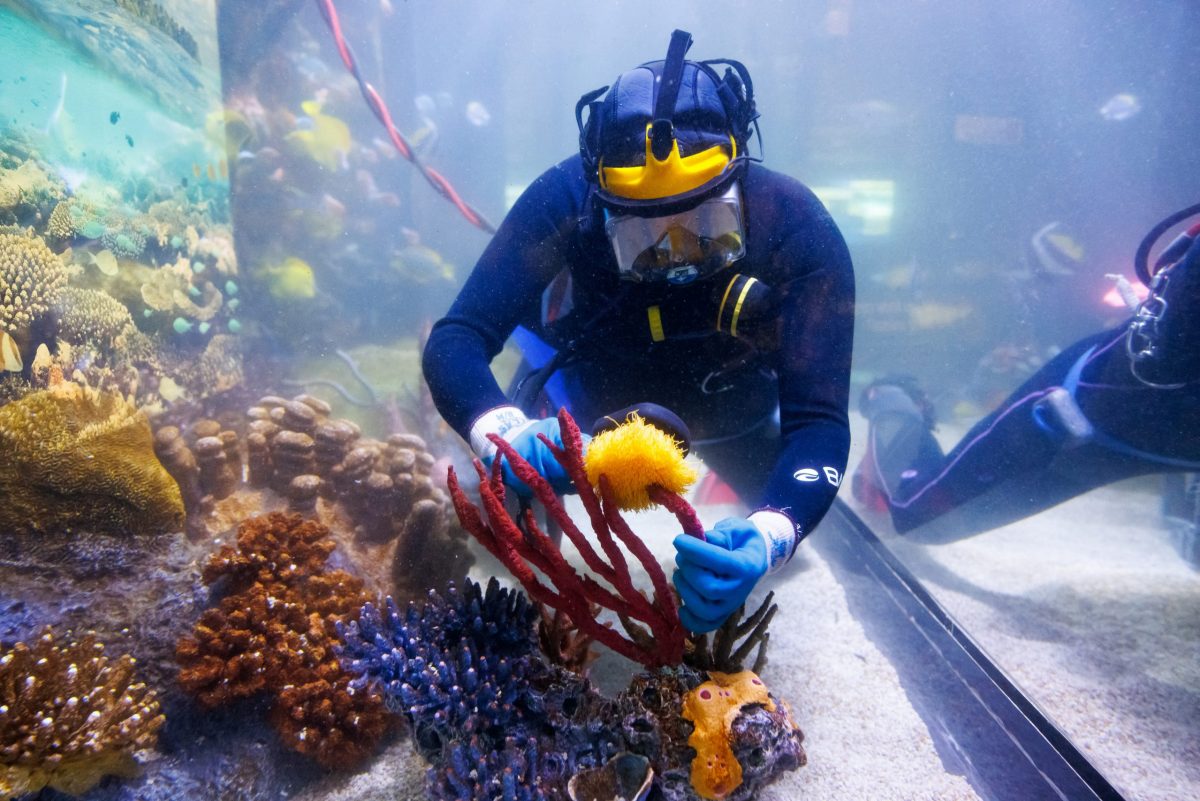

Fig. 5 The Ocean Journey building has opened several new galleries or refreshed existing exhibits in its first 20 years including the globe-spanning Island Life gallery (left) and the Lemur Forest addition (right) to the Tropical Cove gallery.
Never complacent
When it opened, Ocean Journey was seen by many as a fitting companion to the original building that, in a sense, “completed” the Aquarium experience.
Even with the titanic Secret Reef, a plethora of attractions in its light-filled upper story and a marine invertebrate celebration in the Boneless Beauties gallery, however, the new building still had plenty of hidden potential. A pair of unused gallery spaces were incorporated into the architectural plans and earmarked for future expansions.
About two years after Ocean Journey’s debut, the Aquarium delighted the public with the announcement of how the first of these empty spaces would be filled: penguins.
The 18,000-gallon Penguins’ Rock gallery opened on May 3, 2007, with a colony of 20 Gentoo and Macaroni penguins, 10 of each species. The gallery’s sweeping acrylic panels wowed guests with uninterrupted views of the birds’ playful interactions on land and underwater.
Two years after the penguins arrived, the final unused gallery space on the building’s bottom floor was transformed into an aquatic art gallery. Jellies: Living Art opened on May 15, 2009, pairing captivating displays of colorful blown-glass artwork with a wide variety of equally stunning jellyfish species.
These additions to the building not only filled out Ocean Journey’s unused square footage but also served to reinforce guests’ confidence that the Aquarium would continue to evolve by offering fresh, exciting experiences.
In the years that followed, those experiences have grown by leaps and bounds, sometimes literally.
In 2017, the Tropical Cove gallery was completely overhauled, introducing the incredibly popular Lemur Forest exhibit and modernizing the look and accessibility of the Stingray Bay touch experience. Two years after that, the Jellies: Living Art was replaced by Island Life, a globetrotting collection displaying animals from the Indo-Pacific’s Coral Triangle to the rainforests of Madagascar to the wave-wracked shores of Vancouver Island.
Ocean Journey has been an important addition to the Aquarium experience for 20 years, but there’s no risk of succumbing to complacency. Remaining true to the Aquarium’s mission while continuing to find new ways to surprise guests — whether it’s their first visit or their hundredth — will always be key to remaining successful, Stalans says.
“As you look at what we’re doing and what we’re programming, you ask ‘What could we do even better? What could we do more of?’” he says. “I’m very excited about the future. I think there’s still more stories for us to tell.”

